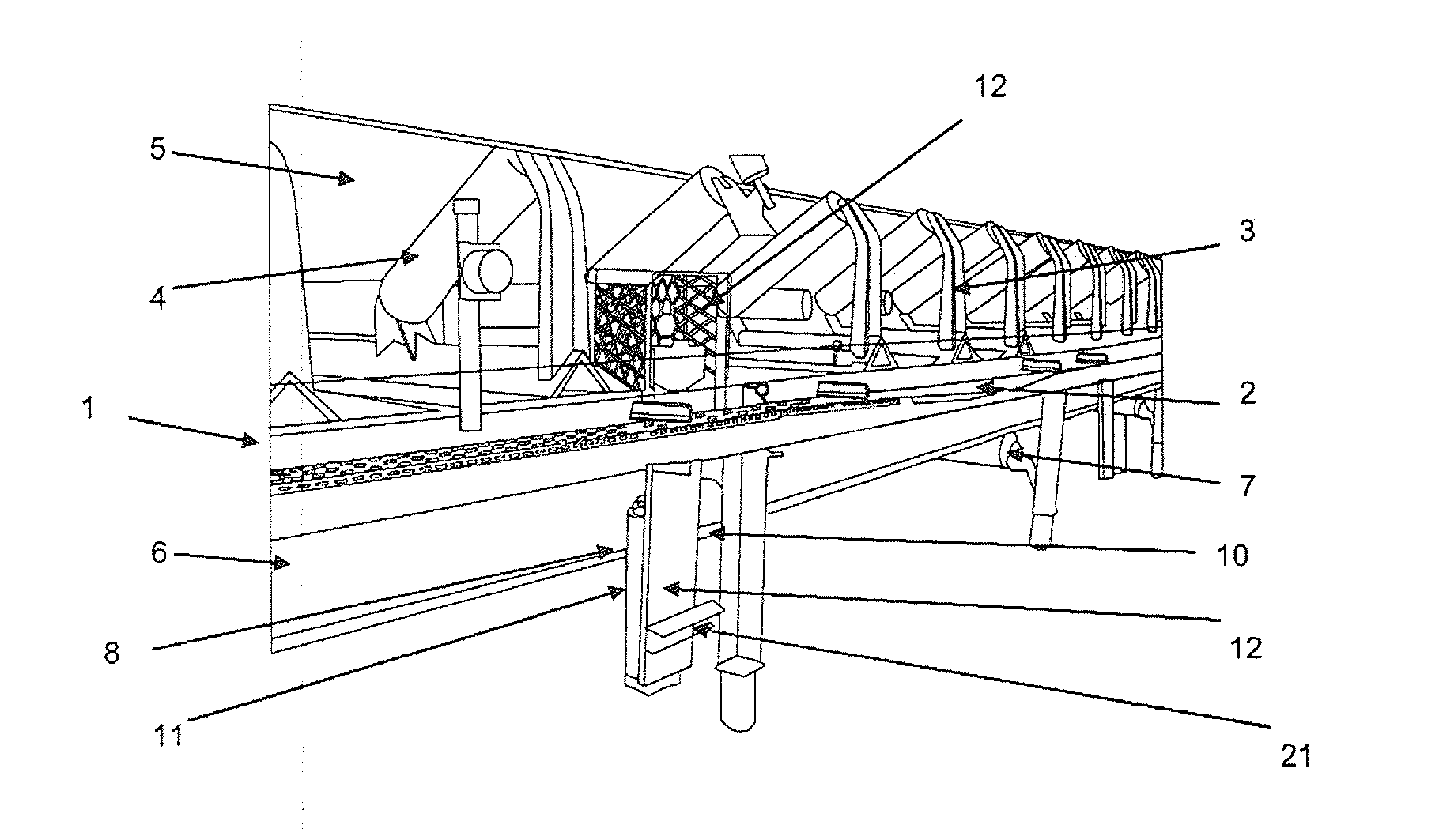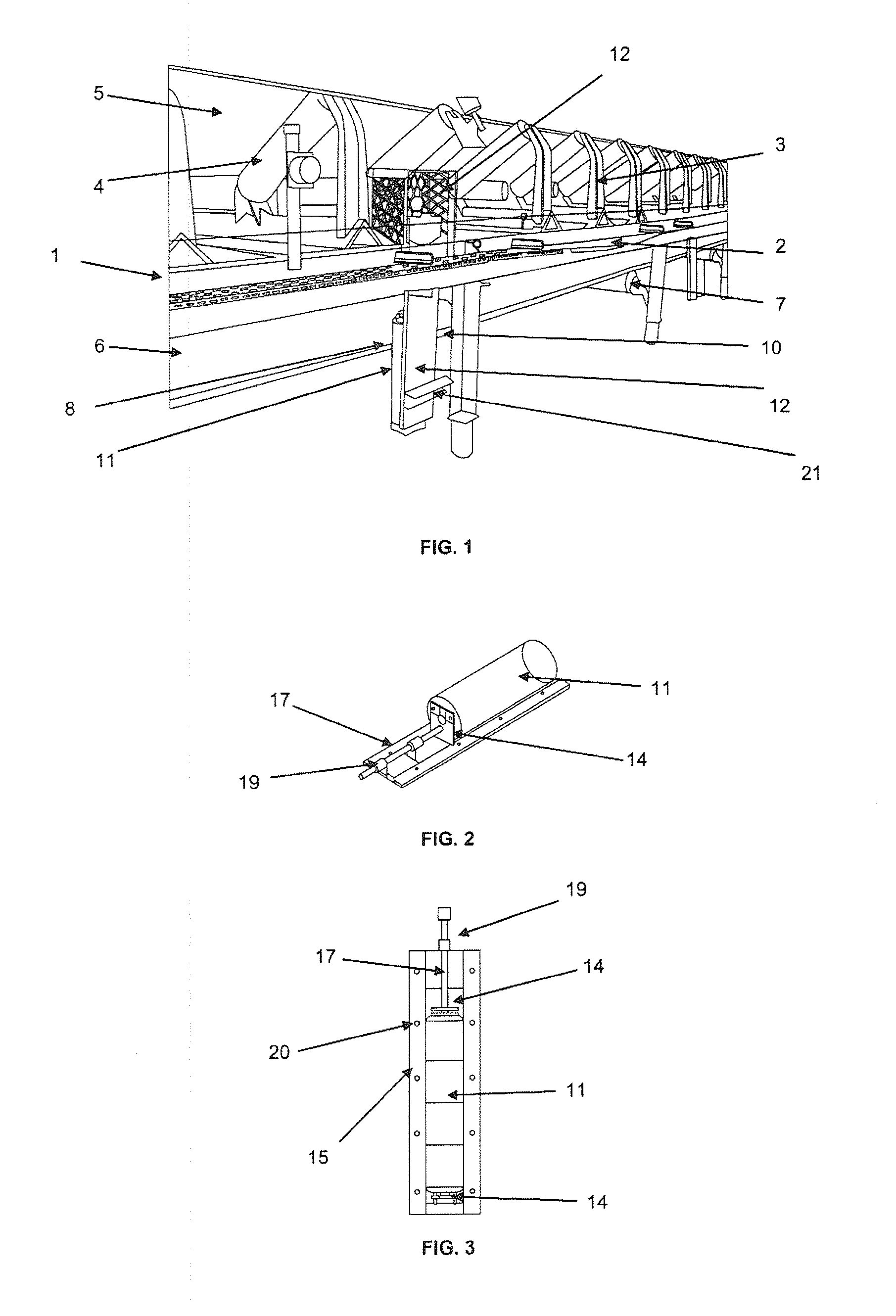Belt guide device for use in conveyor belts
a belt guide and belt technology, applied in the direction of conveyors, conveyor parts, transportation and packaging, etc., can solve the problems of belt pieces being torn off the edge, rubber strips formed by belt edges “unpeeling” and other problems, to achieve the effect of reducing the drawbacks
- Summary
- Abstract
- Description
- Claims
- Application Information
AI Technical Summary
Benefits of technology
Problems solved by technology
Method used
Image
Examples
Embodiment Construction
[0034]The present invention will now be described in greater detail based on an example of execution represented in the drawings.
[0035]FIG. 1 shows a part of a conveyor belt 1 having a support structure 2 whereon there are mounted the easels that support a plurality of load rollers 4.
[0036]The load rollers 4 support the portion of the conveyor belt 5 that moves in the direction of the transport of the material. The load rollers are resistant enough to support not only the belt but also the weight of the material transported thereon.
[0037]The return portion of the belt 6 moves in the direction opposite that of the transport. Return rollers 7 are provided to support the return portion of the belt 6.
[0038]The return rollers 7 are generally more spaced than the load rollers 4, such that the presence of guide rollers is necessary to prevent diversion or misalignment of the belt 6. The guide rollers rotate on their own axis, so as to accompany the movement of the belt.
[0039]The present in...
PUM
 Login to View More
Login to View More Abstract
Description
Claims
Application Information
 Login to View More
Login to View More - R&D
- Intellectual Property
- Life Sciences
- Materials
- Tech Scout
- Unparalleled Data Quality
- Higher Quality Content
- 60% Fewer Hallucinations
Browse by: Latest US Patents, China's latest patents, Technical Efficacy Thesaurus, Application Domain, Technology Topic, Popular Technical Reports.
© 2025 PatSnap. All rights reserved.Legal|Privacy policy|Modern Slavery Act Transparency Statement|Sitemap|About US| Contact US: help@patsnap.com



